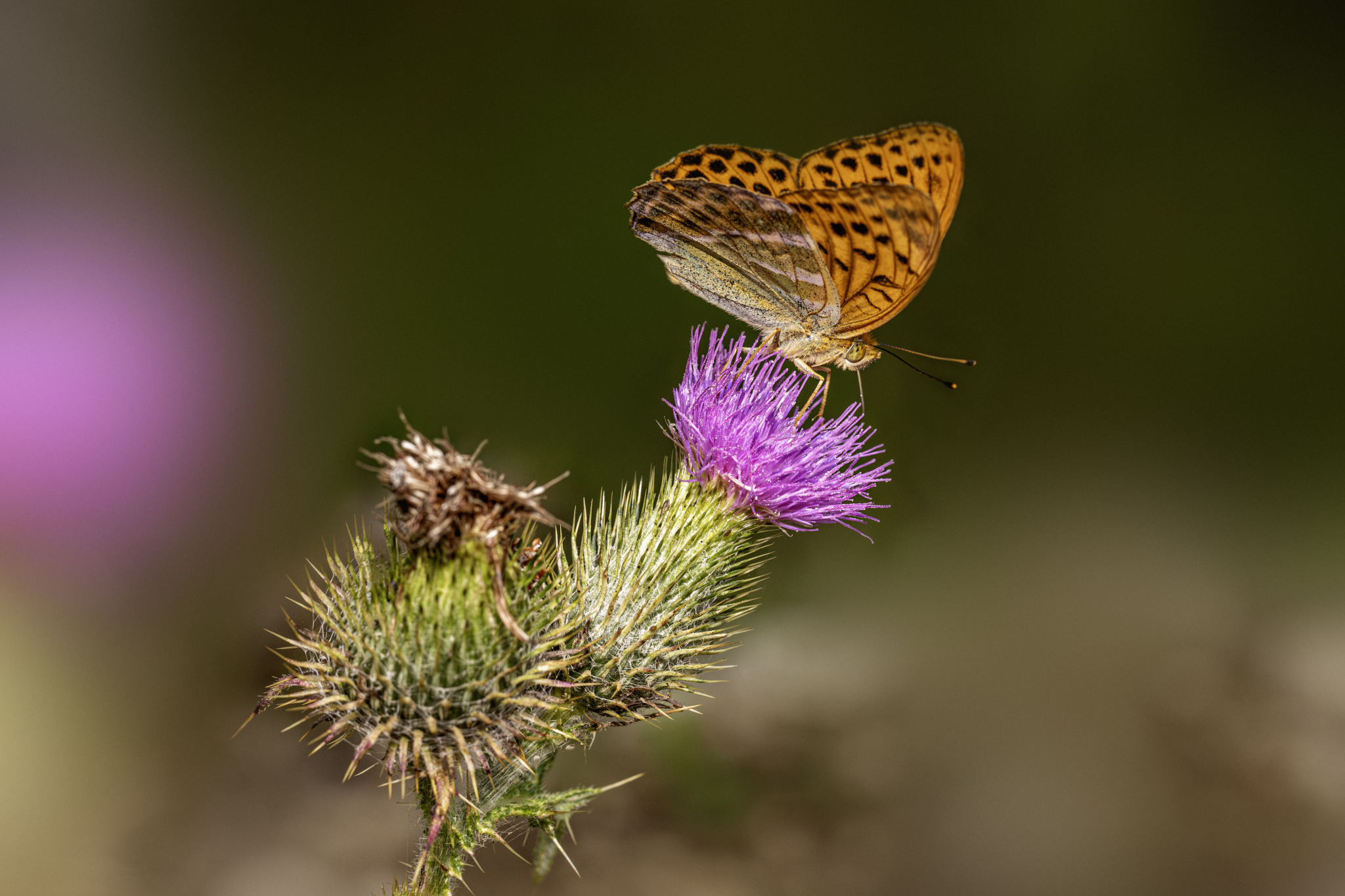Deep Overview: Silver-washed Fritillary (Argynnis paphia)
The Silver-washed fritillary is one of Europe’s largest and most elegant butterflies, named for the distinctive silvery streaks on the underside of its hindwings. Found across woodland habitats, this fast-flying beauty is a powerful flier, often seen gliding and darting along sunny forest rides. With its vivid orange coloration, bold black markings, and graceful flight, it is both charismatic and ecologically significant.
🧬 Taxonomy & Classification
- Kingdom: Animalia
- Phylum: Arthropoda
- Class: Insecta
- Order: Lepidoptera
- Family: Nymphalidae (brush-footed butterflies)
- Genus: Argynnis
- Species: Argynnis paphia
- Common Name: Silver-washed fritillary
🧍♂️ Physical Description
- Wingspan:
- Males: 54–60 mm
- Females: 58–70 mm
- Upperside Coloration:
- Bright orange with black spots and streaks
- Males have four dark sex brands (scent scales) on their forewings
- Underside (Hindwings):
- Greenish background with shimmering silver streaks—the trait behind the name
- Body:
- Covered in fine hairs, typically brown to orange-brown
- Antennae clubbed, orange-tipped
🌍 Distribution & Habitat
- Geographic Range:
- Widespread across Europe, North Africa, and temperate Asia
- From the UK and Iberian Peninsula to Japan and the Himalayas
- Habitat Preferences:
- Prefers deciduous and mixed woodlands, especially with sunny clearings and rides
- Also found in hedgerows, scrub, and sometimes large parks and gardens
- Requires the presence of violets (larval food plant) and nectar sources
🔁 Life Cycle
Stage 1: Egg
- Laid singly in crevices of tree bark, often near violet plants
- Laid in late summer (usually August)
Stage 2: Larva (Caterpillar)
- Overwinters as an egg and hatches in early spring
- Feeds exclusively on violets (Viola species)
- Brownish-black with spiky orange dorsal markings
- Active mainly at night, hiding during the day
Stage 3: Pupa (Chrysalis)
- Pupates in undergrowth or hidden on low vegetation
- Lasts around 2–3 weeks in early summer
Stage 4: Adult
- Flies from June to August, occasionally into September
- Univoltine: one generation per year
- Adults feed on nectar and participate in mating displays
🍽️ Feeding Behavior
- Larval Diet:
- Wild violets (Viola reichenbachiana, V. riviniana)
- Adult Diet:
- Prefers bramble blossom, thistles, marjoram, knapweed, and thistles
- Also feeds on tree sap and overripe fruit, especially in hot summers
- Males often sip moisture and minerals from damp ground
🧠 Behavior & Ecology
- Flight Pattern:
- Fast and gliding with occasional bursts of powerful wingbeats
- Territoriality:
- Males patrol woodland rides, chasing rivals and seeking females
- Reproduction:
- Males locate females visually and through pheromones
- Females exhibit deliberate flight, often avoiding detection
- Camouflage:
- The underside mimics foliage, aiding concealment when resting
🛡️ Predators & Threats
- Predators:
- Birds, wasps, spiders, and parasitic insects
- Threats:
- Habitat loss from deforestation and changes in woodland management
- Decline in violets from overgrazing or woodland neglect
- Climate change may affect timing of life stages
📊 Conservation Status
- IUCN Status: Not globally threatened
- In some regions (like the UK), it is increasing after a period of decline, likely due to improved woodland management and warmer summers
- Conservation Actions Include:
- Promoting ride and glade management in woodlands
- Maintaining violet populations
- Encouraging nectar-rich plant growth
🌸 Ecological Importance
- Pollinator: Contributes to pollination of wildflowers
- Indicator Species: Its presence reflects healthy, biodiverse woodland ecosystems
- Part of the food chain: Supports a range of predators and parasites
📌 Similar Species
- Dark Green Fritillary (Speyeria aglaja):
- Similar in color, but lacks the greenish hue and has rounder wings
- Hindwing underside has round silver spots, not streaks
- High Brown Fritillary (Fabriciana adippe):
- Also similar but much rarer; has more black markings and smaller size
🌿 How to Spot One
- Best seen on sunny woodland rides from June to August
- Look for its gliding flight, often returning to the same nectar source
- If you see silver streaks on the underside while it’s at rest—you’ve found it!
🎯 Fun Facts
- The “silver wash” on the underside is unique among European fritillaries
- Though strong fliers, they can be surprisingly tame while feeding
- Males have scent scales on their forewings that release pheromones to attract females
- The larva overwinters inside the egg—an uncommon strategy among butterflies
- The species is named paphia after Paphos, the sacred city of Aphrodite
🧭 Conclusion
The Silver-washed fritillary (Argynnis paphia) is a spectacular woodland butterfly, prized for its shimmering elegance and strong presence in sun-dappled glades. Though it has suffered from habitat fragmentation in the past, it is making a strong comeback in many areas due to better woodland management. Protecting this species means safeguarding the delicate balance of forest ecosystems it depends on—from violets to nectar plants to leafy glades.
Views: 433
Subscribe to the newsletter:
